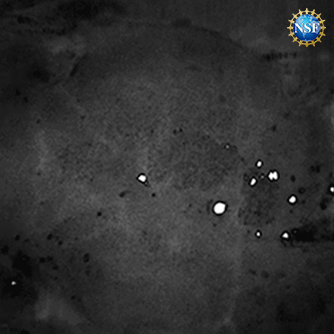We at IFLScience are lucky enough to explore the weird, the wacky, the downright out of this world – sometimes literally! – every single day. And yet sometimes, a study hits our desks that leaves us with little to say but… “Wow!” That was pretty much our reaction when we learned that scientists had used food dye to turn a living mouse temporarily transparent.
Making an “invisible mouse” might not sound like a pressing scientific priority at first glance – surely there’s cancer to be cured and pandemics to prevent? But the benefits of making skin transparent to visible light quickly become clearer when you consider that without that, the only way to look inside the body is with scans, even the best of which can only achieve a limited view, or surgery.
“Looking forward, this technology could make veins more visible for the drawing of blood, make laser-based tattoo removal more straightforward, or assist in the early detection and treatment of cancers,” said Dr Guosong Hong, a Stanford University assistant professor who helped lead the project, in a statement.
So, how did they do it? Surprisingly, the team used an ingredient you might even have lurking in a kitchen cupboard: the yellow food dye tartrazine. Combining this with a hypothesis born out of studying old optics textbooks, they thought of a way of applying well-known physics concepts to entirely new biomedical applications.
“We combined the yellow dye, which is a molecule that absorbs most light, especially blue and ultraviolet light, with skin, which is a scattering medium,” first author Dr Zihao Ou explained in another statement. “Individually, these two things block most light from getting through them. But when we put them together, we were able to achieve transparency of the mouse skin.”
Ou added, “For those who understand the fundamental physics behind this, it makes sense; but if you aren’t familiar with it, it looks like a magic trick.”
The magic, or physics – however you choose to look at it – lies in how dissolving the tartrazine in water alters its refractive index in such a way that it happens to match the refractive index of the lipid molecules in bodily tissues. As the tartrazine solution is rubbed into the skin, the light scatter within the tissue is gradually reduced, like the mist disappearing from your windscreen on a cold morning.
As this example using raw chicken meat shows, the text sitting behind the tissue gradually becomes more visible as the transparency increases.

Photographs illustrating the difference in the transparency of chicken breast tissue after soaking in tartrazine solutions with an increasing concentration. Scale bars: 1 cm.
Image credit: Guosong Hong/Stanford University
Doing this on a slab of meat is one thing – what about a living mouse? The team applied the tartrazine to the skulls and abdomens of mice, and waited a few minutes for the dye to fully diffuse into the skin. Then, they were able to visualize the blood vessels of the brain and the workings of the digestive system through the skin – no scalpels or scanners required.

Time-lapse images of blood vessels in the brain just beneath the skull of a sedated mouse, revealed without any surgery, incisions, or damage to the mouse’s bone or skin.
Image credit: Stanford University/Gail Rupert/NSF
Any excess dye can simply be washed off, while the dye that has been absorbed is harmlessly processed and excreted in urine within about 48 hours.
“It’s important that the dye is biocompatible – it’s safe for living organisms. In addition, it’s very inexpensive and efficient; we don’t need very much of it to work,” Ou said.
But please don’t take this as license to go rummaging in your kitchen and rubbing food dye on your skin. This hasn’t been tested in humans yet, and our skin is about 10 times thicker than a mouse’s, so some more experimentation is going to be needed to figure out how to make it work. But if the team can do it, the possibilities are exciting.
“Many medical diagnosis platforms are very expensive and inaccessible to a broad audience, but platforms based on our tech should not be,” Ou said, adding that using this method to open up the body to exploration with a light microscope could “completely revolutionize existing optical research in biology.”
Who would have thought adding yellow dye to skin could make it see-through? We know, we know – it’s physics. But we’re going to choose to call it magic for just a little bit longer.
The study is published in the journal Science.
Source Link: Live Mouse Turned Temporarily Transparent Thanks To Yellow Food Dye And Clever Physics